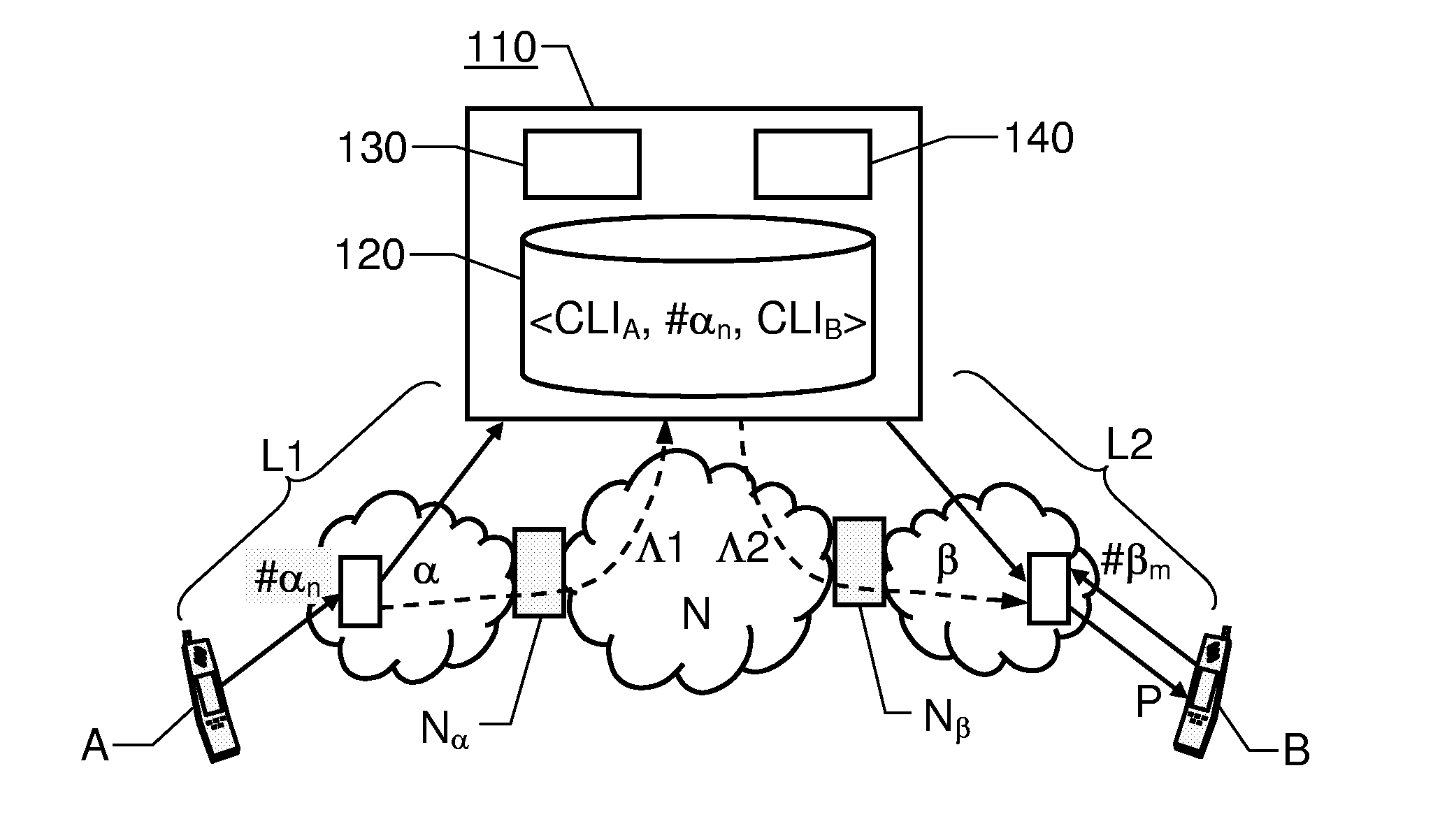Telephone communication
a technology of telephone communication and telephone book, which is applied in the field of cost-effective communication solutions, can solve the problems of disadvantage, comparatively complicated and/or expensive to make and receive phone calls to/from users, and comparatively complicated to store the callee's number in the conventional software telephone book of the user terminal
- Summary
- Abstract
- Description
- Claims
- Application Information
AI Technical Summary
Benefits of technology
Problems solved by technology
Method used
Image
Examples
Embodiment Construction
[0028]FIG. 1 shows a block diagram of a communications system according to one embodiment of the invention. The system is adapted to establish a telephone connection between a first terminal A and a second terminal B. We assume that the first terminal A is associated with a subscription in a first home telephone network α. The first terminal A is here identified by means of a first network identity CLIA, typically in the form of a so-called calling line identifier. We further assume that the second terminal B is associated with a subscription in a second home telephone network β in which the terminal B is identified by means of a second network identity CLIB. One or both the terminals A and B may be a fixed telephone (e.g. of POTS type, POTS=plain old telephone service). However, at least one of the terminals A and B may equally well be a wireless terminal (e.g. a mobile phone having a subscription with a PLMN operator, PLMN=public land mobile network). Naturally, depending on wheth...
PUM
 Login to View More
Login to View More Abstract
Description
Claims
Application Information
 Login to View More
Login to View More - R&D
- Intellectual Property
- Life Sciences
- Materials
- Tech Scout
- Unparalleled Data Quality
- Higher Quality Content
- 60% Fewer Hallucinations
Browse by: Latest US Patents, China's latest patents, Technical Efficacy Thesaurus, Application Domain, Technology Topic, Popular Technical Reports.
© 2025 PatSnap. All rights reserved.Legal|Privacy policy|Modern Slavery Act Transparency Statement|Sitemap|About US| Contact US: help@patsnap.com



